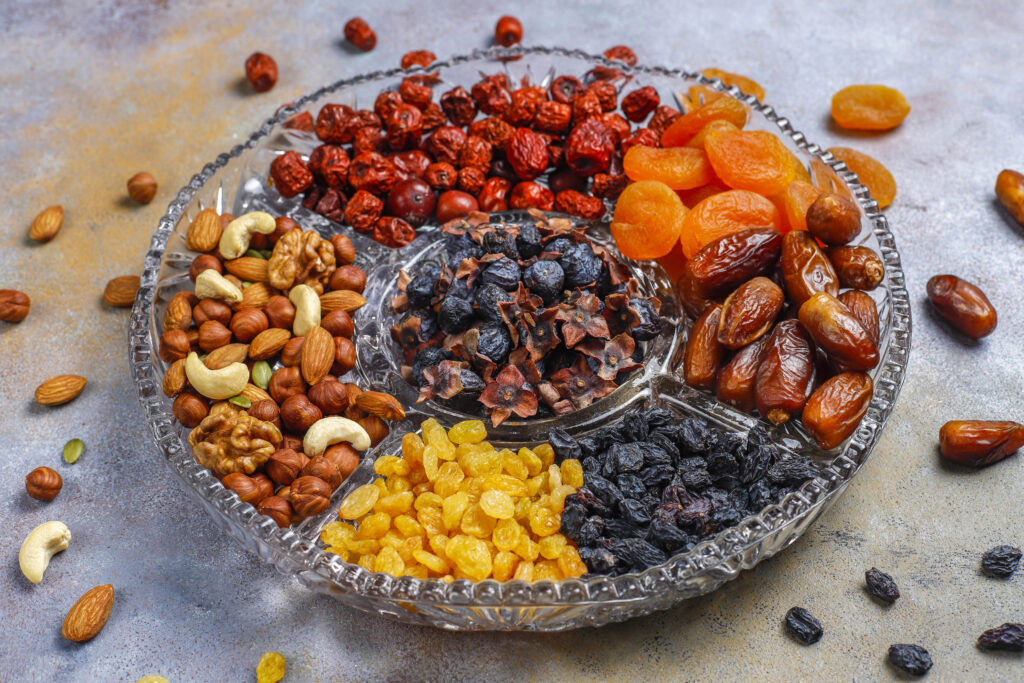Are you curious about how your dietary choices affect your oral health? You may find several articles on this topic which inform you just about the things you should avoid but you may not find information about what to eat for great oral health. Yes, several food choices can help improve your oral health and protect your teeth. In this article, you’ll dive into nutrition and explore some of the best and worst foods that will damage or protect your oral health.
You may have heard about the proverb that you are what you eat. This saying is correct about your oral health including your teeth and gums. Starchy and sugary foods are the favorite foods of your oral bacteria that can cause gum disease and tooth decay.
In addition, frequent visits to your dentist clinic show a relationship between your diet and oral health. Your healthy smile is associated with good oral hygiene and good oral hygiene can be obtained by following a good oral hygiene routine i.e. flossing once a day or brushing twice a day. You have to pay more attention to maintain your oral health for a longer time, by adopting healthy dietary habits. In addition, eating a lot of types of nutrient-rich foods promotes your gums and teeth health. Taking a balanced diet can help you maintain mouth health with a healthy smile and a healthy body as well. This explains that you should eat a variety of fruits and vegetables to add a lot of protein, calcium, and fiber to your diet. These nutrients are beneficial for your oral health.
Best Foods for Maintaining a Great Oral Health
Fresh fruits and veggies are the best foods for oral health because they have a high nutritional value with additional cleaning benefits for teeth. In addition, calcium-rich foods, such as fat-free milk, yogurt, cheese, canned salmon, dark green leafy vegetables, fatty fish, fortified soy drinks, and tofu can also help your teeth and bones. Chewing crunchy foods get saliva along with water, which helps to wash away plaque caused by food particles and bacteria.
Influence of Diet on Your Oral Health
Your diet impacts your oral health to a great extent. There are several reasons you should prioritize your diet to maintain good hygiene for your gums and teeth. Your dietary choices determine what type of nutrients, such as minerals and vitamins are available to you. You need sufficient levels of vitamin A, vitamin K, vitamin D, vitamin E, calcium, and phosphorus to maintain great oral health. Some dietary habits cause staining or damage to your teeth, thus impacting your mouth health negatively. This is the reason why some things are best enjoyed in moderation to help limit the damage.
Focusing on foods that are low in sugar and carbohydrates, contain important nutrients needed for your mouth such as magnesium, phosphorus, and calcium, and are high in fiber, can help build strong teeth. Similarly, avoiding processed, acidic, and sugary high-carbohydrate foods without significant nutritional value can help improve your teeth and gums health.
Let’s learn about certain foods that actively help promote your oral health and also that can increase your likelihood of cavities, sensitive teeth, and bleeding gums.
Foods to Eat
Raw Vegetables
Vegetables are rich in vitamins that help protect your oral health. When you crunch on raw vegetables, it helps to remove bacteria and plaque from your teeth during eating. Snacking on vegetables like celery or carrots may help you maintain the results of your teeth whitening treatment.
Cacao Nibs
Chocolate without the addition of sugar content is certainly a good option that can help prevent cavities by keeping certain oral bacteria in check and stopping the formation of plaque on your teeth. Studies showed that cocoa contains polyphenols that are also present in tea and coffee, help kill cavity-causing bacteria, and form a barrier between plaque and teeth.
A 2021 study suggested that using a rinse containing cocoa beans can destroy a certain species of bacteria that is responsible for cavities. Therefore, most mouthwashes contain cocoa beans. Although strong evidence has not been found, researchers still emphasize such mouthwashes blast away other beneficial bacteria in the oral microbiome. Hence, sticking to sugar-free cocoa nibs or dark chocolate as extra stuff to your average Snickers bar may counteract the benefits of chocolate.
Oranges and Grapefruit
Although acidic foods are not good for the teeth, moderate eating of oranges, grapefruit, and citrus fruits can have positive effects on your oral health. These citrus fruits have high levels of vitamin C, which positively impacts your teeth health. They help strengthen the blood vessels and connective tissues within the mouth. It slows the progression of gum inflammation that if not checked can lead to other gum diseases.
A 2009 study explained that daily consumption of grapefruit for fifteen days consecutively can help improve your vitamin C levels and reduce gum bleeding as well.
Leafy Greens
Healthy oral bacteria need prebiotics to feed on. These probiotics are richly found in greens. Although leafy greens also contain high carbohydrates, they help the mouth produce more nitrate-reducing bacteria. This activity increases the amount of nitric acid in your mouth which is beneficial for your mouth and cardiovascular system.
In addition, leafy greens do help clean your teeth and actively support a healthier oral microbiome.
Moreover, dark leafy greens are an effective source to remineralize your teeth to strengthen their structure. The high mineral content of green leaves can reduce plaque formation on your teeth. Arugula, turnip greens, kale, swiss chard, and spinach are good examples of leafy greens.
Grass-Fed Dairy
Cheese and butter are examples of grass-fed dairy products. These contain high amounts of vitamin K2, which is required for maintaining your teeth health. However, this nutrient is not available in sufficient amounts and a majority of the population of the world is deprived of Vitamin K2. All mammals other than humans have certain enzymes that can convert vitamin K1 to vitamin efficiently in their digestive system. Humans lack that certain enzyme and cannot get vitamin K2 on their own. Other mammals have these enzymes that get activated by chlorophyll and provide vitamin K2 in higher amounts. So it is not good to minimize the importance of grass-fed because they live on grain and corn and can produce vitamin K2-rich products.
You can add vitamin K2 into your diet by eating chicken liver, goose liver, eggs, natto, and beef. Such foods support your dental; health.
Fatty Fish
Many healthy diets patterns have included fatty fish as an essential ingredient because it is rich in vitamin D. Vitamin D is essential for nearly every system of your body. However, it also has a lesser-known benefit which is its ability to reduce the risk of tooth decay. Vitamin D found in fatty fish works synergistically with vitamin K2 and vitamin A to deliver calcium to your teeth and help strengthen the enamel from the inside out. If you’re efficient in these nutrients, you may experience dental problems that arise due to weakened enamel.
In addition, oily fish are also rich in omega-3s, which are essential for maintaining your gum health and also help prevent symptoms of periodontists (gum disease), a prevailing condition in adults in the country.
Remember, if you are experiencing gum bleeding on a regular basis we;e brushing or flossing, try to increase your omega-3s intake. Omega-3 intake can help reduce gum bleeding and inflammation. Examples of fish high in both omega-3s and vitamin D are trout, mackerel, tuna, and salmon.
Foods to Avoid
Starchy Foods
Starchy foods convert into sugar while tucking in your teeth during chewing. This sticky material attacks your teeth and causes an accumulation of plaque on your teeth. You can limit the damage by eating such foods in moderation at meal times. Cakes, crisps, and bread are examples of starchy food.
Caffeine
Coffee, tea, or black tea are rich in compounds that cause staining of your teeth. You may switch to herbal teas or enjoy these drinks with a straw to avoid the staining of teeth. You can clean your teeth by adopting certain teeth-whitening procedures that can prevent the damage.
Alcohol
Alcohol is a beverage considered bad for your overall health but for your oral hygiene, it is worse. It has negative impacts on your teeth for a range of reasons, including its acidic nature that destroys the enamel of your teeth and protects your teeth from bacterial invasions. Alcohol or wine also causes staining of teeth that makes your dollar ugly. Sugar found in such beverages impacts your oral health negatively. However, you can enjoy this drink in moderation or completely quiet it. To limit the damage, it is best to drink alcohol alongside a meal.
Beans and Lentils
You often consider beans and lentils as good dietary sources for your overall health. However, the presence of phytic acid in them can contribute to tooth decay or gum problems. This compound is specified to bind certain nutrients altogether, including magnesium, phosphorus, calcium, and vitamin D, which makes it difficult for the teeth to absorb them completely.
If you completely avoid such foods, you may experience some other dental problems like periodontists and cavities. However, there is still good news for you, that after stripping of excess phytic acid, beans and lentils help promote good oral hygiene. Soaking beans. Lentil or other grains overnight will eliminate phytic acid from them and make them beneficial for your mouth health. Eating sprouted grains can ensure that you’re eating phytic acid-free grains.
Kombucha
It is a popular drink that is considered best to fight against diseases because it contains many antioxidants and healthy bacteria. However, sometimes kombucha drinks contain a significant amount of added sugar and lack of active healthy bacteria. Such drinks may cause the benefits to outweigh the drawbacks. Always choose the kombucha which is best for your oral hygiene and is visible without added sugar. After drinking the beverage, rinse your mouth with a mouth freshener and then brush for 5 minutes to prevent acid attacks from sugar-loving opportunistic bacteria. These precautionary measures help maintain teeth health and good oral hygiene.
Dried Fruits These are fruits and you may take them as healthy food but remember the word “dried” has added to the meaning. Dried fruits have been stripped of all water which makes them similar to a sticky material that feeds sugar to the oral microbiome. A combination of this sugary sticky material with low-pH fruits can promote cavities in your teeth. Thus it is advised that fresh whole fruits are beneficial for promoting teeth health than dried fruits because dried fruits have less water content.
These are fruits and you may take them as healthy food but remember the word “dried” has added to the meaning. Dried fruits have been stripped of all water which makes them similar to a sticky material that feeds sugar to the oral microbiome. A combination of this sugary sticky material with low-pH fruits can promote cavities in your teeth. Thus it is advised that fresh whole fruits are beneficial for promoting teeth health than dried fruits because dried fruits have less water content.
Sodas
These beverages contain high sugar content and a great deal of acid even with zero calories. Many common soft drinks rank between 2 and 3 on pH scale which indicates their highly acidic nature even when compared with coffee or other caffeinated drinks.
The higher level of acidity in your mouth is likely to contribute to tooth decay, general dysbiosis of the oral microbiome, and gum bleeding or inflammation.
Drinking sodas over a short period, avoiding sipping for hours on end, and swishing with water immediately after drinking sodas can protect your teeth and provide a buffer for your teeth and gums. Always brush your teeth 30 minutes after drinking such drinks. These steps will protect your teeth health and maintain good oral hygiene.
Conclusion
To maintain great oral health, you may start by educating yourself on the best foods to eat and the worst foods to avoid. You can enjoy the foods that are listed as culprits, occasionally. Occasional use of sugary, sticky, or acidic foods wouldn’t derail your oral health. Try to enjoy such foods in moderation or enjoy them alongside meals that support your good oral hygiene.
You can limit the damage to your teeth and gums by making an appointment with your dental doctor. They will guide you in the best way to change your dietary habits which have visible impacts on your oral health. You also can talk about dietary choices so you may make healthier choices in the future that will be beneficial for your teeth and gums.







